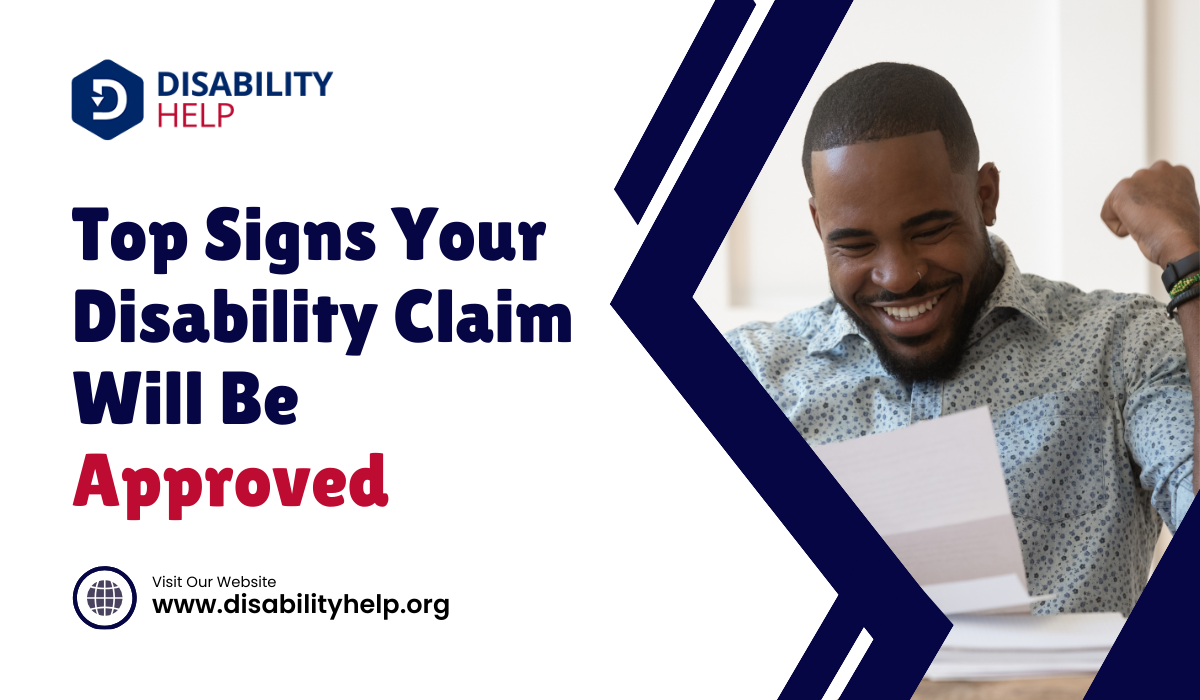Finding our way through VA disability benefitsFinancial assistance provided to individuals who are unable to work due to a disability, such as Soc... and compensation can feel overwhelming, but we can simplify it. First, we establish eligibility and file a disability claim. Understanding disability ratings is vital since it affects compensation. After filing, we follow post-claim steps like managing benefits, handling appeals, and potentially adding or removing dependents. Accessing additional resources and exploring other benefits, such as VA housing grants and long-term care options, can further support us. We should also consider contacting the VA for assistance or utilizing support from organizations like the DAV. Stick with us to see these steps unfold thoroughly.
Key Takeaways
- Determine Eligibility: Establish a direct connection between your disability and military service through solid evidence and a current diagnosis.
- File a Comprehensive Claim: Submit all required documentation, including thorough and up-to-date medical records, to meet eligibility criteria.
- Understand Disability Ratings: Learn how VA ratings assess the severity of your disability and use the combined rating table for multiple conditions.
- Appeal if Necessary: File an appeal within one year if you disagree with the VA's decision, and gather additional evidence to strengthen your case.
Determining Eligibility
Determining eligibility for VA disability benefits hinges on proving a direct connection between a veteran's current disability and their military service. To qualify for these benefits, we need to demonstrate that our disability is service-related. This involves gathering solid evidence that links our condition to our time in the military. Without this connection, our eligibility for VA disability benefits is compromised.
The severity of our disability is another critical factor. The VA evaluates how much our condition affects our daily lives. This assessment determines the level of compensation we receive. More severe disabilities generally lead to higher monthly compensation. Additionally, the number of dependents we've can influence our benefits. Veterans with more dependents may be eligible for increased compensation.
Meeting these eligibility criteria is essential for securing the support we need. It's not just about proving we have a disability; it's about showing the VA that our disability is directly tied to our military service and significantly impacts our lives. By doing so, we guarantee that we receive the monthly compensation we deserve, helping us and our dependents manage the challenges posed by our service-related disabilities.
Filing a Disability Claim

When we file a disability claim, we need to make certain we submit all the required documentation to support our case.
Understanding the eligibility criteria is vital to guarantee we meet the VA's standards.
Let's explore how to effectively gather and submit the necessary paperwork.
Submitting Required Documentation
Submitting the needed documentation is crucial for successfully filing a disability claim with the VA. When we submit our disability claim, including essential evidence like medical records, service treatment records, and supporting statements is key. These documents provide the detailed information the VA needs to evaluate our claim accurately.
We need to make sure that our medical records and service treatment records are thorough and up-to-date. These records serve as the foundation of our claim, proving our medical conditions and their connection to our military service. Additionally, supporting statements from fellow service members or family can further validate our claims by offering firsthand accounts.
Sometimes, VA representatives might request additional documentation. We should be prepared to provide this promptly to avoid any processing delays. Submitting all necessary documentation upfront can prevent unnecessary setbacks. We don't want our claim to be held up because we missed a crucial piece of information.
Eligibility Criteria Overview
After gathering and submitting the required documentation for our claim, it's important to understand the eligibility criteria for VA disability benefits. Knowing these criteria can help us navigate the VA benefits system more effectively.
To qualify for VA disability compensation, we need to meet several key requirements:
- Current Disability: We must have a current physical or mental disability diagnosed by a healthcare professional.
- Service-Related Injury or Disease: The disability must be linked to an injury or disease that occurred during our time in military service.
- Connection to Military Service: There needs to be a clear connection between our current disability and our military service. This is often substantiated by medical records or service documents.
- Severity of Disability: The VA determines compensation based on the severity of our disability, which is assessed through VA ratings.
When filing a disability claim, we can start the application process online, by phone, mail, or fax. The VA may request additional medical evidence to support our claim during the review process.
Understanding these eligibility criteria is essential for us to successfully navigate VA benefits and secure the compensation we deserve.
Post-Claim Process
Veterans have several options to explore if they're not satisfied with their VA disability claim decision. We can file an appeal within one year of receiving the notification letter.
If we choose to appeal, we've three paths: a formal appeal to the Board of Veterans Appeals, a review by a higher-level VA adjudicator, or a supplemental claim with new evidence.
To start, gathering additional evidence can strengthen our case. We must use standard claim forms for any filings post-March 24, 2015.
If we opt for a formal appeal, the Board of Veterans Appeals will review our case, which might take longer but offers a thorough examination. Alternatively, a higher-level VA adjudicator can re-evaluate our claim without new evidence, providing a quicker resolution.
For those who've new evidence, filing a supplemental claim is a recommended route. DAV specialists can be invaluable in navigating this post-claim process, helping us understand our options and complete the necessary paperwork.
Understanding Disability Ratings
Let's explore how the VA calculates combined disability ratings and what effective dates mean for our benefits.
We'll also cover the steps to take after receiving our ratings. Understanding these points helps us navigate the VA system more effectively.
Calculating Combined Ratings
Calculating combined disability ratings might seem intricate, but it's essential for understanding the benefits you're entitled to. VA benefits experts nationwide assist veterans in maneuvering this process to guarantee we receive the maximum compensation.
The combined ratings table prioritizes the most disabling conditions before considering less severe conditions.
Understanding multiple conditions and how they're rated together is vital for maximizing disability benefits. Here's a simplified breakdown:
- Identify the most disabling condition: This is the starting point for calculating your combined rating.
- Add less severe conditions: Each additional disability is added in descending order of severity.
- Use the combined ratings table: This table helps determine the total percentage by factoring in each condition's impact.
- Round-up combined rating: The VA rounds up the combined rating to the nearest 10% for compensation purposes.
We have one year to appeal a claims decision if we believe the rating doesn't accurately reflect our disabilities. This timeframe is crucial for ensuring our benefits are correctly calculated.
Effective Dates Explained
While grasping combined ratings is vital, recognizing the effective dates of our disability claims can greatly impact our benefits and retroactive pay. The effective date is typically either when the VA receives our claim or when our entitlement arose. For those of us filing within a year of separation from service, the effective date could be the very day after discharge. This timing can significantly impact the amount of retroactive pay we receive.
If we file our claim more than a year after leaving the service, the effective date usually defaults to the date of the claim. Understanding this can help us strategize to maximize our benefits. By ensuring we file promptly, especially within that pivotal first year, we can potentially secure a more favorable effective date and, consequently, more retroactive pay.
It's important for us veterans to grasp how these timelines work. Knowing the effective date isn't just a technical detail; it's a vital factor in our overall compensation. The better we comprehend these dates, the better we can navigate the system to get the benefits we've earned.
Post-Rating Steps
Once we've received our VA disability rating, understanding how these ratings will impact our benefits and compensation is vital. VA disability ratings, reflecting the severity of our service-connected disabilities, range from 0% to 100% in increments of 10%. These ratings determine the amount of disability compensation we're entitled to.
Here are the key steps we should take post-rating:
- Review the VA Notification Letter: This letter outlines our final rating decision and the evidence used. It's crucial to carefully read this document to understand our rating and the reasoning behind it.
- Evaluate Medical Records: Verify our medical records and any additional information are accurate and detailed. This will help us understand if our rating reflects our actual medical condition.
- Consider Filing a Claim for Increase: If our condition worsens, we may need to gather new evidence and file a claim for an increased rating. This involves additional medical review and evidence gathering.
- Understand the Combined Rating Table: For those with multiple conditions, the VA uses a combined rating table to calculate the overall disability rating. This affects our final compensation amount.
Managing Benefits and Appeals

Managing VA disability benefits and appeals demands diligent monitoring and timely updates to guarantee smooth processing and successful outcomes. We need to stay on top of our VA benefits to secure the support we deserve.
One of the first steps in managing benefits is keeping our compensation claims up to date. This includes promptly uploading all necessary supporting documents.
It's also crucial to regularly check the status of our claims and appeals online. By doing so, we can monitor open compensation appeals and stay informed about any progress or needed actions.
Maintaining our direct deposit and contact information is another critical aspect. This helps prevent delays and ensures we receive our compensation without any issues.
Another valuable tool is accessing our payment history through the VA system. This allows us to keep track of what we've received and identify any discrepancies promptly.
Overall, effective management of our VA benefits means staying organized and proactive. By keeping all our information and documents updated, we can navigate the compensation claims and appeals process more smoothly and confidently.
Let's make sure we're always informed and prepared.
Adding or Removing Dependents
Staying organized with our VA benefits also means knowing how to add or remove dependents to guarantee our compensation reflects our current family situation. The process is straightforward but requires careful attention to detail.
Adding Dependents: By including dependents such as spouses and children, we can increase our VA disability benefits compensation. This helps secure our benefits and accurately support our family's needs.
Removing Dependents: It's vital to promptly remove dependents who no longer qualify to avoid overpayment or incorrect distribution of benefits. This keeps our records accurate and prevents potential repayment issues.
Submitting Documentation: We need to submit proper documentation to add or remove dependents. This could include marriage certificates, birth certificates, or divorce decrees. The VA requires these documents to verify changes in our family structure.
Updating Information: We can update our dependent information online or through the VA's secure messaging system. This makes the process convenient and ensures our records are up to date.
Accessing Additional Resources
To guarantee we make the most of our VA benefits, let's explore the additional resources available to us. First, we can request benefits information packets from our State Veterans Affairs offices. These packets provide detailed information about the resources we can access.
Additionally, the Benefits Explorer tool on the VA/DoD eBenefits website is an invaluable asset. By inputting our specific information, we receive personalized recommendations tailored to our unique situations. This tool helps us uncover educational benefits, housing options, insurance, and pension eligibility that we might otherwise overlook.
For a broader range of veteran support services, the National Resource Directory is a fantastic place to start. It offers an extensive list of resources designed to assist us in various aspects of life, from health care to community support.
If we're looking for job opportunities, the Employment Center on VA/DoD eBenefits provides a wealth of information and resources. Here, we can find job listings, resume-building tools, and other employment assistance tailored to veterans.
Exploring Other VA Benefits
Let's explore the array of other valuable VA benefits that can further support our well-being and financial stability. Beyond disability compensation, the VA offers numerous programs and services tailored to our unique needs.
- VA Housing Grant: If we have a service-connected disability, we can apply for a housing grant to help with home modifications, making our living spaces more accessible and comfortable.
- VR&E Services: Veterans Readiness and Employment (VR&E) services offer support for employment, education, and training, aiding our shift back to civilian life with valuable skills and opportunities.
- Long-Term Care Options: The VA provides various long-term care options for Veterans and caregivers, ensuring we've access to essential healthcare services as we age or face health challenges.
- Additional Pension Payments: We might qualify for additional monthly pension payments, providing extra financial aid and enhancing our overall financial stability.
Navigating these benefits can be complex, but a DAV benefits specialist can assist us. If we're managing another Veteran's finances, becoming a VA fiduciary might be necessary.
Always keep our VA compensation status updated and refer to our VA benefits packet for more detailed information. State Veterans Affairs offices can also offer localized support and guidance for Dependency and IndemnityA legal principle requiring one party to compensate another for harm or loss, relevant in disability... Compensation among other benefits.
Contacting VA for Assistance

For personalized support and guidance, we can contact the VA directly to address our questions and concerns regarding disability benefits. One of the most effective ways to get help is by calling the VA benefits hotline at 800-827-1000. This hotline provides extensive assistance and can clarify any doubts we might've about our disability benefits or compensation.
Alternatively, we can reach out to MyVA411 at 800-698-2411, which offers another reliable avenue for getting the information we need. For those of us using Telecommunications Relay Services, we can communicate with the VA via TTY at 711.
Additionally, we can seek help from accredited representatives. These professionals can assist us in filing VA disability claims and handling appeals, making sure that we navigate the process correctly and efficiently. If we prefer written communication, we can message the VA directly for inquiries or assistance regarding our disability benefits.
Staying updated with the latest information on VA disability benefits and compensation is vital. Following VA channels ensures we don't miss any significant updates or changes.
Utilizing DAV Support
DAV support offers invaluable assistance to veterans as they maneuver the complexities of VA disability benefits. As we work through the maze of VA benefits, DAV specialists are our allies. They offer free assistance nationwide, helping us with counselingProfessional guidance to help individuals cope with emotional, mental, or social challenges, particu... on claims and the often overwhelming appeals process.
Maneuvering VA benefits can be overwhelming, but with a DAV specialist by our side, the process becomes much more manageable.
Here's how DAV specialists can help:
- Counseling on Claims: They guide us through the initial filing, ensuring we use the correct standard claim forms and understand the combined rating table for disability ratings.
- Assistance with Appeals: If we're unsatisfied with a VA decision, DAV specialists help us navigate the three available paths for the appeals process within the one-year deadline from the VA notification letter.
- Gathering Additional Evidence: They assist in collecting necessary evidence for re-adjudication or a formal appeal, strengthening our case.
- Expert Knowledge: With their in-depth understanding of VA regulations and procedures, DAV specialists streamline the process, allowing us to focus on our well-being.
Frequently Asked Questions
What Is the 70-40 Rule for VA Disability?
The 70-40 rule lets us receive a higher combined disability rating if we have one disability at 70% or more and additional disabilities totaling at least 40%. This guarantees we get compensated fairly for our overall impairmentA loss or abnormality of a body structure or function, whether physical, mental, or sensory, often a....
What Is the 5-Year Rule for VA Disability?
The 5-Year Rule states that if our VA disability rating remains the same for five years, it becomes permanent. The VA can't reduce it unless there's evidence of fraud or a clear error in the original decision.
What Is the Most Common 100% VA Disability?
The most common 100% VA disability is PTSD. Veterans with severe PTSD can't work or function normally, leading to a full disability rating. This guarantees they receive maximum compensation for their service-connected condition.
What Is the Easiest Way to Get 100% VA Disability?
The easiest way to get 100% VA disability is to provide clear, compelling evidence of our severe service-connected conditions. We should seek help from accredited representatives to make sure all necessary evidence is included in our claim.
Conclusion
Finding our way through VA disability benefits and compensation can be overwhelming, but we can tackle it together. Let's make sure we grasp our eligibility, file claims correctly, and follow through on the post-claim process.
Understanding our disability ratings and managing benefits and appeals is essential. We shouldn't hesitate to access additional resources and explore other VA benefits.
If we need help, reaching out to the VA and utilizing DAV support will steer us every step of the way. We've got this!






